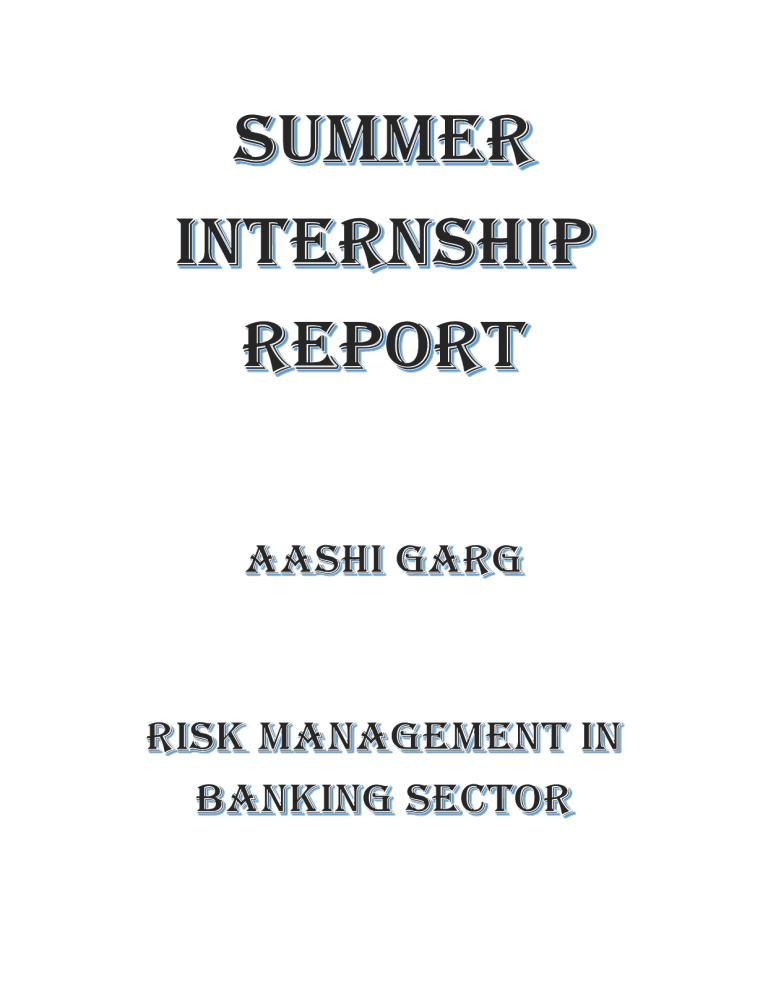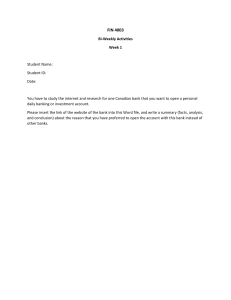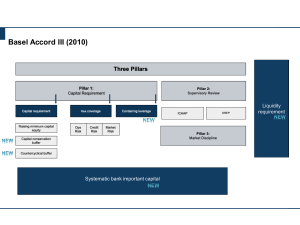
Risk is a key factor for businesses, because you cannot get profit from any activity without risk. Since banking risks are a source of unpredicted expenses, their proper management might stabilize revenues, having the role of shock absorber. At the same time, strengthening the value of banking shares can only be achieved through real communication with the financial markets and the implementation of adequate programmes of banking risk management. The paper analyzes, for the beginning, a series of general aspects regarding risk and banking risk management. Then, we present the conclusions resulting from the quantitative research descriptive type which had as objective the analysis of knowing the measures that have to be taken in the banking management for a better management of risks that might cause bankruptcy and opinions about the NBR responsibilities to monitor and control the banks in the system. Keywords: risk, management, bank So far, risk has been regarded as a negative concept. The positive interpretation of risk reflects a new understanding of the relationship between the wellmanaged risk and the improved performance. The risks faced by any organisation are considered continuous. They can be evaluated in terms of unexpected events, uncertainty and opportunity, and also from the point of view of the influence they have on the level of performances and of achieving the strategic objectives. In a synthetic sense, risk is the variability of results under the pressure of factors from the environment in which the organisation operates. Risk can be regarded from the viewpoint of uncertain events that might affect the strategic, operational and financial objectives. Risk is a measure of the inconsistency between different possible results, obtained under more or less favourable or unfavourable conditions (Mihalcea and Androniceanu, 2000). There is always the distinction between risk and uncertainty. Risk can be related to a situation in which various possible effects might occur and there is a past relevant experience that would allow obtaining some statistics to estimate the effects. Uncertainty occurs where there are various past effects but the previous statistics do not allow estimating them (Drury, 1992). It is a universal truth that the existence of risk implies the existence of failure. Not all risks are identical and nor failures have the same magnitude. In fact, failure may occur for several reasons, each of them having a particular importance in the risk management (Haubrich, 2001): the first reason refers to the unsuccess of the managerial control; the second category of reasons includes the situations in which managers intentionally assume certain risks and lose; the third possibility can be considered more subtle: the organisation takes certain risks which, on their own, are the best – the management understands and accepts the importance of the exposure – but the sum of the undertaken risks are not socially optimal. Basel I Accord: The Basel Committee on Banking Supervision, which came into existence in1974, volunteered to develop a framework for sound banking practices internationally. In 1988 the full set of recommendations was documented and given to the Central banks of the countries for implementation to suit their national systems. This is called the Basel Capital Accord or Basel I Accord. It provided level playing field by stipulating the amount of capital that needs to be maintained by internationally active banks. Basel II Accord: Banking has changed dramatically since the Basel I document of 1988. Advances in risk management and the increasing complexity of financial activities / instruments (like options, hybrid securities etc.) prompted international supervisors to review the appropriateness of regulatory capital standards under Basel I. To meet this requirement, the Basel I accord was amended and refined, which came out as the Basel II accord. The new proposal is based on three mutually reinforcing pillars that allow banks and supervisors to evaluate properly the various risks that banks have to face and realign regulatory capital more closely with underlying risks. Each of these three pillars has risk mitigation as its central board. The new risk sensitive approach seeks to strengthen the safety and soundness of the industry by focusing on: ● Risk based capital (Pillar 1) ● Risk based supervision (Pillar 2) ● Risk disclosure to enforce market discipline (Pillar 3) TYPES OF RISKS When we use the term “Risk”, we all mean financial risk or unexpected financial loss. If we consider risk in terms of probability or occur frequently, we measure risk on a scale, with certainty of occurrence at one end and certainty of non-occurrence at the other end. Risk is the greatest phenomena where the probability of occurrence or non-occurrence is equal. As per the Reserve Bank of India guidelines issued in Oct. 1999, there are three major types of risks encountered by the banks and these are Credit Risk, Market Risk & Operational Risk. Further after eliciting views of banks on the draft guidelines on Credit Risk Management and market risk management, the RBI has issued the final guidelines and advised some of the large PSU banks to implement so as to gauge the impact. Risk is the potentiality that both the expected and unexpected events may have an adverse impact on the bank’s capital or its earnings. The expected loss is to be borne by the borrower and hence is taken care of by adequately pricing the products through risk premium and reserves created out of the earnings. It is the amount expected to be lost due to changes in credit quality resulting in default. Where as, the unexpected loss on account of the individual exposure and the whole portfolio is entirely borne by the bank itself and hence care should be taken. Thus, the expected losses are covered by reserves/provisions and the unexpected losses require capital allocation. 1. 2. 3. 4. 5. Credit risk Market risk Operational risk Environmental risk Regulatory risk Almost all of the participating banks have a risk management department. • Most of the industry’s risk managers’ report to the Chief Executive Officer, Asset and liability manager and Chief Risk Officer accounting for the balance in equal proportions. • Slightly more attention is paid to credit and operational risk than to Market risk, as 40 % of the banks operating do not have risk committee. • A majority of banks have performed a gap analysis between their current risk management practice and the new capital requirements. RISK MANAGEMENT: KEYS FOR EFFECTIVE RISK MANAGEMENT: • To direct risk behaviour & influence the shape of a firm’s risk profile, management should use all available options. Using financial incentives and penalties to influence risk taking behaviour is effective management tool. • Sharing of information by keeping confidentiality intact is also helpful to find out different ways for controlling the risk as valuable inputs may be received through this sharing. Even information on creditworthiness of counterparties that are known to take substantial risk can also help. • Diversification is extremely important. As it lowers the variance in investor portfolios, improves corporate ability to raise debt, reduces employment risks, & heightens operating efficiency. • Governance should never be ignored. Careful structuring of the alliance in advance of the deal and continual adjustment thereafter help to build a constructive relationship. • One should not trust while in business. Personal chemistry is good but is no substitute for monitoring mechanism, co-operation incentives, & organizational alignment. • Without support system within the organization itself, external alliances aredoomed to fail. WEB SITES • www.bis.org • www.rbi.org • www.kpmg.com • www.cognizant.com • www.google.com • www.yahoo.com ARTICLES • Risk Management in Banks. -- R S Raghavan Chartered Accountant. • Basel Norms challenges in India –Swapan Bakshi • White Paper The Ripple Effect: How Basel II will impact institutions of all sizes • Risk Management Guidelines for Commercial Banks & DFIs.





